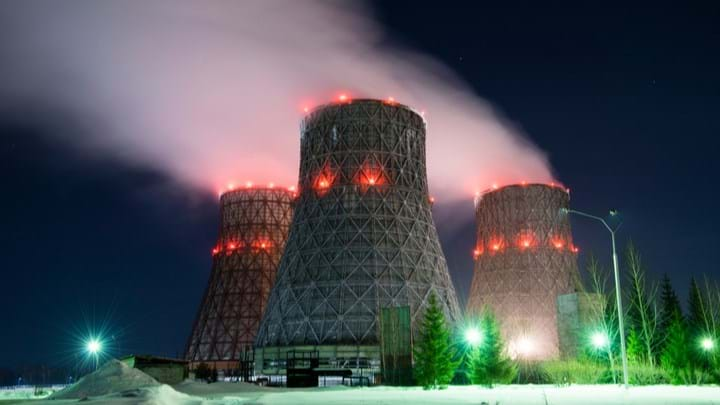Nuclear cogeneration pushed as solution for low carbon heat

COGENERATION of heat by new nuclear plants could help balance intermittent renewables and provide a low-carbon source of process heat for hydrogen production and domestic heating, says a report from The Royal Society.
The nuclear industry currently produces huge volumes of unused heat. If this were tapped instead of wasted, process heat could be fed to industry to produce hydrogen, synthetic fuels and for desalination. Nuclear Cogeneration: civil nuclear in a low-carbon future explains that currently, around 65% of the energy generated by nuclear plants is lost as waste heat.
Nuclear cogeneration has found limited application around the world, including low temperature process heat supplied to district heating schemes in China and Sweden, for desalination in Japan, and high-temperature process heat for salt refining in Germany. The policy briefing, compiled following workshops with representatives from industry, academia and trade groups, concludes that the promise of the nuclear industry in decarbonising other sectors lies with a new generation of small modular reactors (SMRs) rather than retrofitting existing larger plants.
SMRs could be located close to industrial clusters, with their reactors matched to the temperature requirements of the users on site. High temperature heat, around 300°C and upwards, can be accessed from the secondary cooling circuit before steam is sent to the turbine generator. Lower temperature waste heat, around 100–200°C, could be extracted from the turbine exhaust.
In the EU, 26% of industrial heat demand is for heat above 400°C, with the majority generated by burning fossil fuels, according to figures from the International Atomic Energy Authority. In the UK, heat for industrial processes contributes 14% of all CO2 emissions, according to the Department for Business, Energy & Industrial Strategy (BEIS).
The report says SMRs integrated into energy and industry networks could balance intermittent supply from renewables by providing electricity to the grid when wind power falls short of demand, and then switch to heat production when the wind is blowing hard. In turn, high temperature heat from next generation reactors, including high temperature gas cooled reactor (HTGR) designs, could essentially provide energy storage by feeding steam to reforming, Haber-Bosch and Fischer-Tropsch processes to produce hydrogen, ammonia, and synthetic fuels.
While there are no commercial HTGRs in operation today, China is constructing a commercial unit, and development work is also being conducted in Europe, Japan and the US. The authors say that with support, HTGRs capable of providing process heat could be deployed from around 2035.
As well as low carbon steam for natural gas reforming, nuclear could produce hydrogen through three other routes: by providing electricity for water electrolysis; or heat and electricity for steam electrolysis, which the authors say promises higher thermal efficiencies; and heat and electricity for thermochemical processes which use chemical cycles such as the sulfur-iodine cycle, to split water.
The report notes that the economic benefits of nuclear cogeneration are hard to quantify as it depends on which sectors and products it provides heat and power for.
A report from consultancy Lucid Catalyst has estimated that hydrogen will need to be produced at a cost of US$0.90/kg by 2030 for it to broadly substitute fossil fuel sources. Renewable sources will be unable to dip below US$2/kg by 2030 it predicts. SMRs, however, could meet the 2030 target if the reactors are built in large ‘gigafactories’ that produce dozens of reactors and components in a highly-efficient fashion. It recommends locating these factories in brownfield shipbuilding ports to reinvigorate local skilled economies. It estimates that 10–12 gigafactories could replace all of the UK’s natural gas consumption.
Bruce Hanson, nuclear representative on the board of the IChemE Energy Centre, said: “The new generation of nuclear reactors being developed around the world and in the UK offer some fantastic opportunities to provide high grade heat and power. Something other zero-carbon technologies cannot do efficiently. We are in a really good place in the UK to lead the field in developing these reactors and being the first to implement them. As chemical engineers we should be thinking how we should embrace a future nuclear-hydrogen technology that moves our chemical sector to a zero–carbon position by 2050.”
Recent Editions
Catch up on the latest news, views and jobs from The Chemical Engineer. Below are the four latest issues. View a wider selection of the archive from within the Magazine section of this site.




